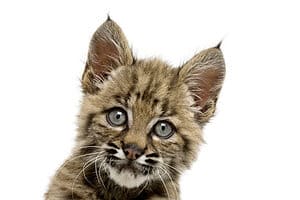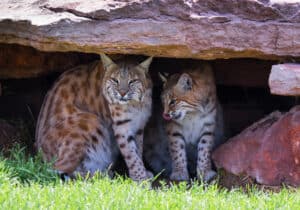Indiana, known as the “Hoosier State,” is a Great Lakes-region state in the Midwest. It shares boundaries with Kentucky to the south, Michigan to the north, Ohio to the east, and Illinois to the west. The geography of Indiana is diverse and includes rocky hills, grassy plains, riverbanks, lakeshores, and deep forests. The bobcat is the most widely dispersed North American feline, and it may be found all over the continent, from southern Canada down to southern Mexico. But are there bobcats in Indiana?
Bobcats are a common wild cat species in North America and indigenous to its territories. Bobcats do not, however, live in every state in the union. While the wild cat species is classified as vulnerable in some states due to diminishing numbers, other states have robust and healthy populations that are sufficient to allow for the legalization of hunting and trapping. So, is Indiana fortunate enough to keep a thriving bobcat population? That’s what we will uncover in this article and more!
Are There Bobcats in Indiana?
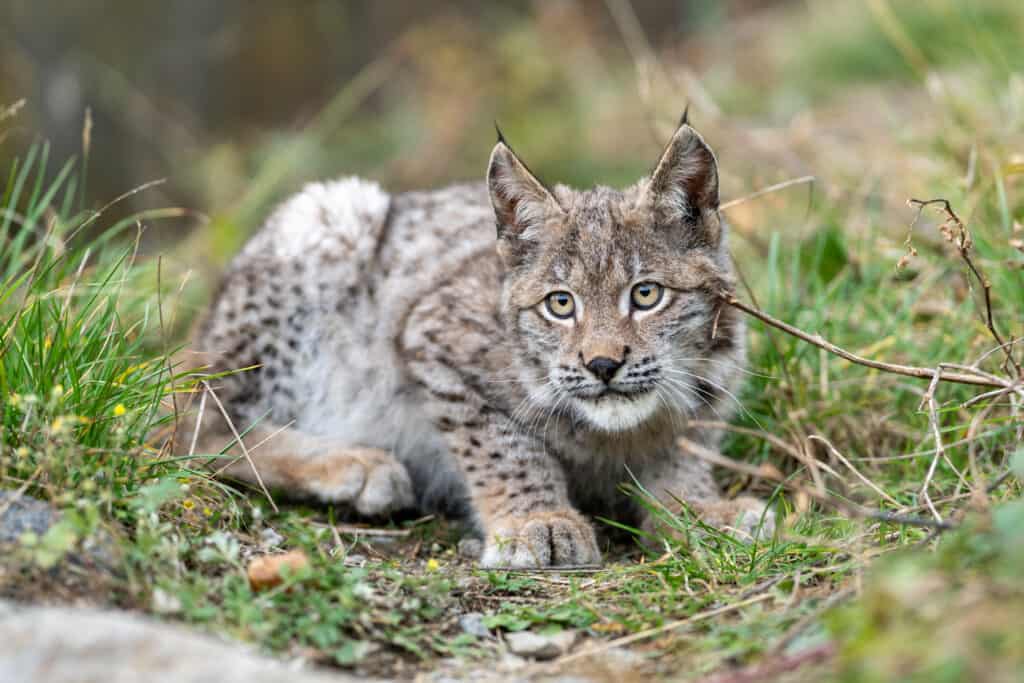
There’s a thriving population of bobcats in Indiana.
©Vaclav Sebek/Shutterstock.com
To answer simply, there are bobcats in Indiana, and their population is increasing as time goes by. Indiana is one of the fortunate states to have a thriving bobcat population. In fact, the bobcat is the only native wild cat in the state that you can find today.
In southern and certain areas of central Indiana, bobcat populations are prevalent, and they are growing in northern Indiana. Due to their ability to blend in with their environment and move stealthily, they are rarely noticed.
Although they have been found in practically every county in Indiana, bobcats are most prevalent in the southern and west-central portions of the state. The DNR in south-central Indiana conducted research that showed bobcats could go up to 100 miles from their birthplace. The DNR compiles reports of fatalities, trail camera images, and sightings of bobcats. The yearly Archer’s Index, in which amateur deer bow hunters describe the number of hours they spent hunting and the species they encountered, also collects reports on bobcat sightings. Bobcat occurrence in some regions is also documented by citizen science trail-camera surveys.
Where Do Bobcats Live in Indiana?
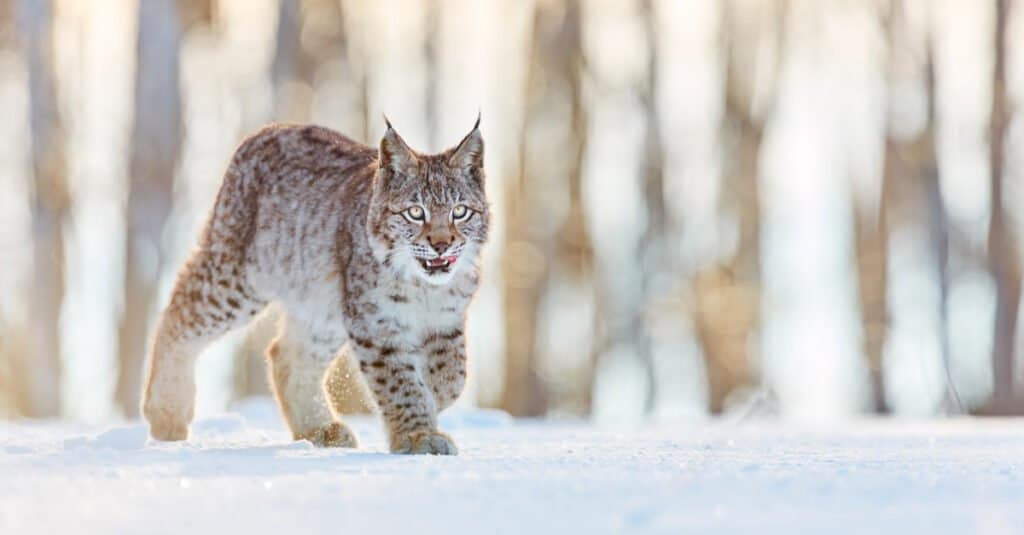
Bobcats typically hide in brushy regions, fields, or clean cuts with mixed-in regrowth.
©Petr Salinger/Shutterstock.com
The bobcat favors wooded regions for enough cover in stalking prey. They typically hide in brushy regions, fields, or clean cuts with mixed-in regrowth. Although it has been reported throughout the state, west-central and southern Indiana is where it is most frequently spotted. The home ranges of female bobcats can range from 6 to 12 square miles, whereas those of male bobcats can range from 30 to 75 square miles.
Most of the time, bobcats are nocturnal, hunting and traveling in the early morning and late evening. Bobcat sightings are possible for many Indiana residents. However, sightings of these animals are uncommon because of their elusiveness.
What is the Status of Bobcats in Indiana?
Until 2005, Indiana’s bobcat — the only resident wild cat in the state — was listed as a state-endangered species. Fortunately, it is now a species of least concern with steady numbers, according to the International Union for Conservation of Nature and Natural Resources (IUCN).
Bobcats have historically lived in Indiana, but by the mid-1900s, their populations had declined due to unrestricted hunting and habitat destruction. Due to their small population sizes, they were included on the state’s endangered species list in 1969 and stayed there until 2005.
According to research by the IDNR in south-central Indiana, bobcats can travel up to 100 miles in their dispersal range. They can recolonize accessible habitats thanks to their long-distance mobility. Sadly, it places them close to highways. Bobcat fatalities are now frequently caused by vehicular crashes.
The population of bobcats is thought to continue to grow based on recent trends in recorded bobcat road kills and other related mortalities. The IDNR received around 20 reports of bobcat fatalities each year in the early 2000s, and more than 70 bobcat fatalities per year were reported in 2010, 2011, and 2012. Most of these fatalities occurred in the state’s southern regions, where hills, mixed woodlots, and abandoned mines make for excellent habitat.
Are Bobcats Hunted in Indiana?
The bobcat’s resurgence is one of Indiana’s greatest conservation achievements. In the state, bobcats are still a protected species; therefore, they cannot be killed or captured. Given their current situation and the expansion of adequate habitat, they have expanded their range inside the state further. The IDNR verified bobcat reports in 52 Indiana counties between 1970 and 2012.
While the state’s bobcat populations are recovering, there may be concerns regarding cattle hunting, pet safety, and effects on game birds. Recent findings from stomach content analysis show that bobcat nutrition in Indiana relies mostly on smaller mammals rather than avian species and that conflicts between bobcats and cattle are rare. The IDNR has not yet received any confirmed reports of bobcats hurting a pet.
Are Bobcats a Problem in Indiana?
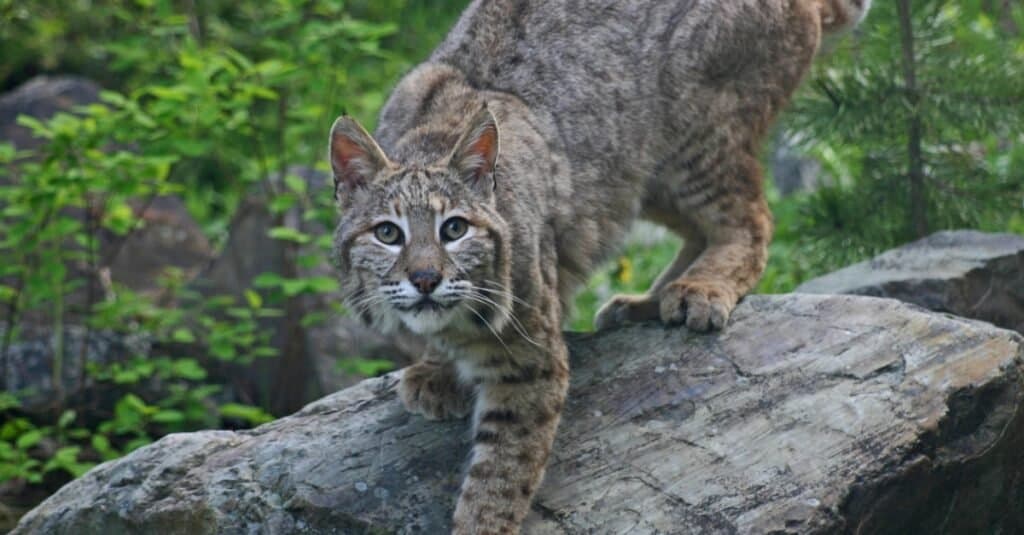
The bobcat is the smallest type of lynx cat breed.
©iStock.com/Anita Elder Design
Despite its thriving population, bobcats have not been considered a nuisance in Indiana. In the state and anywhere else they are found, bobcats play an important role in the food chain.
The state of Indiana is exceptional in that it permits citizens to keep various wild animals as pets. Wild animals are divided into three categories. Squirrels and rabbits are included in the first one. The second group consists of smaller felines, including margays, servals, and Pampas cats. The third class, which permits larger animals, includes species not included in the first two. Surprisingly, lions and tigers are on the state’s list of wild cats legally allowed to roam.
What To Do if You Encounter a Bobcat
Bobcats should be respected if encountered, like any other animal. A bobcat’s natural inclination is to flee from people. Like other wildlife, bobcats should never be fed or approached because doing so can weaken their natural reaction to run from people and provoke unfavorable encounters. A bobcat loitering in a yard may move on if potential attractants, such as pet food or bird feeders, are removed.
Up Next:
Bobcats in Utah: Types & Where They Live
Bobcats in Michigan: Types & Where They Live
Bobcats in Georgia: Types & Where They Live
Bobcats in Texas: Types & Where They Live
The photo featured at the top of this post is © Victor Arita/Shutterstock.com
Sources
- Indiana Department of Natural Resources, Available here: https://www.in.gov/dnr/fish-and-wildlife/wildlife-resources/animals/bobcats/
- Indiana Woodland Steward, Available here: https://www.inwoodlands.org/bobcats-in-indiana/
- , Available here: https://www.hepper.com/are-there-wild-cats-in-indiana/
Thank you for reading! Have some feedback for us? Contact the AZ Animals editorial team.



